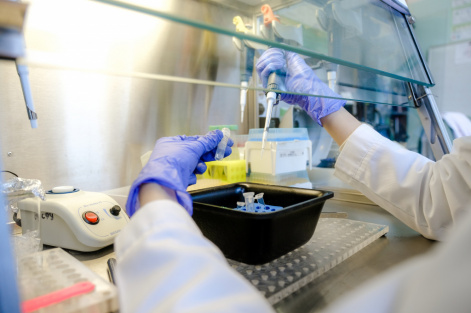Scientists have created glowing hybrid proteins to detect tumor markers
14 March 2022 г.

Scientists from the Krasnoyarsk Science Center of SB RAS and the Siberian Federal University have created bifunctional hybrid proteins consisting of bioluminescent obelin as a signal module and tumor marker proteins as a specific module. The created model can become the basis for the development of test systems for the rapid and sensitive detection of these tumor markers in human blood.
The photoprotein obelin emits blue light when interacting with calcium. It is of interest as a reporter molecule in the detection of target molecules and it is capable of providing high sensitivity of the assay. To obtain hybrid proteins by genetic engineering methods, the researchers extended the luminous molecule by adding the survivin protein or the MIA protein to its end. Survivin is absent in normal tissues of an adult, but is found in almost all malignant tumors. The MIA protein is produced predominantly by melanoma cells, but is not observed in normal melanocytes.
The hybrid proteins were found to be stable and active. With their help, in a model analysis, the scientists determined the concentration of the tumor markers MIA and survivin in a range close to a diagnostically significant one. In addition, the resulting hybrids are stable when stored frozen in solution for 6 months, the loss of bioluminescent activity during this time being only 10–15%. Thus, they can become the basis for creating test systems for detecting tumor markers in the blood.
“The resulting hybrid proteins exhibit the properties of the original molecules: tumor markers are recognized and bound to the corresponding antibodies while obelin has bioluminescence. Using the example of two tumor markers, we have demonstrated good prospects for using these hybrids as luminous markers. Unlike other systems, the assay developed by us is performed in a single stage using a single antibody, which can significantly reduce the analysis cost. The almost instantaneous and bright response of obelin bioluminescence provides fast and sensitive target detection, which can be important in the diagnosis and monitoring of diseases. In the future, we plan to optimize the conditions for conducting the analysis in order to increase its sensitivity,” said one of the authors of the study, Evgenia Bashmakova, Candidate of Biological Sciences, senior researcher at the Institute of Biophysics SB RAS.
The study was supported by a grant from the President of the Russian Federation for young scientists, candidates of science (MK-772.2020.4), the Government of the Krasnoyarsk Region and the Krasnoyarsk Regional Science Foundation (No. 2021012006966).
Share:
